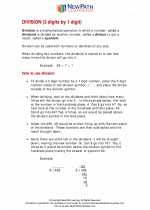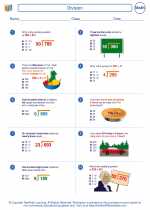Translation in Mathematics
Translation in mathematics refers to the process of moving a shape or an object from one position to another without changing its size, shape, or orientation. This movement can be done in any direction - left, right, up, or down - and by a specified distance.
Key Concepts
When dealing with translations, it's important to understand the following key concepts:
- Vector: A vector is a quantity that has both magnitude and direction. In the context of translations, a vector represents the direction and distance of the movement of the shape.
- Coordinate Notation: Translations can be described using coordinate notation, where the original coordinates of the points of the shape are shifted according to the specified vector.
- Describing Translations: Translations can be described using words, vectors, or coordinate notation.
Example
Consider a triangle with vertices at points A(1, 2), B(4, 3), and C(2, 5). If we want to translate this triangle 3 units to the right and 2 units down, we can describe this translation as a vector v = (3, -2). Using coordinate notation, the new coordinates of the vertices after the translation would be:
A'(1 + 3, 2 - 2) = A'(4, 0)
B'(4 + 3, 3 - 2) = B'(7, 1)
C'(2 + 3, 5 - 2) = C'(5, 3)
Study Guide
Here's a study guide to help you understand and practice translations:
- Understand the concept of translation and how it differs from other transformations such as reflection and rotation.
- Learn how to describe translations using coordinate notation and vectors.
- Practice translating various shapes on the coordinate plane using different vectors.
- Explore real-world applications of translations, such as in geography or computer graphics.
- Review and master the properties of translations, such as the fact that the size and shape of the object remain unchanged.
By mastering the concept of translation and practicing related problems, you'll be well-prepared to handle any translation-based questions in mathematics.
[Translation] Related Worksheets and Study Guides:
.◂Math Worksheets and Study Guides Sixth Grade. Division

 Worksheet/Answer key
Worksheet/Answer key
 Worksheet/Answer key
Worksheet/Answer key
 Worksheet/Answer key
Worksheet/Answer key
